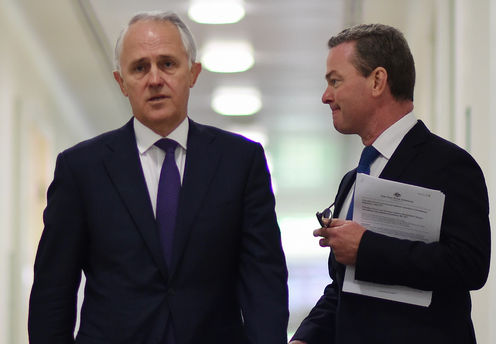
Australia’s new prime minister, Malcolm Turnbull, has announced what he calls a “21st-century government”. This article is part of The Conversation’s series focusing on what such a government should look like.
Change is in the air. According to our new Prime Minister Malcolm Turnbull, his will be a 21st century government. But what does this entail? And what is the role of science and innovation in such a government?
The challenge for a genuinely 21st century Australian government is how to wrap its arms around the future in such a way that it improves Australia’s ability to capitalise on its research capacity and create new jobs, industries and opportunities for the coming century.
A 21st century ministry
The expanded Industry, Innovation and Science portfolio will now encompass digital technology and engineering, which together comprise the engine that has driven explosive growth in Silicon Valley, Israel and other forward-looking places.
We need to invest broadly in science research to feed the technology and engineering engine. But how do we bridge the funding “valley of death” between research and industry, and convert our excellent research outcomes into proven technologies?
We have companies aplenty that can pick up and commercialise proven technologies, but they are rightly cautious about licensing the rights to research outcomes. To address this problem, the US government directly invests nearly ten times more than we do as a percentage of GDP to fund business feasibility studies intended to convert research outcomes into proven technologies.
To drive our innovation agenda harder, a 21st century government could consider grants and development contracts specifically to support the translation of research outcomes into proven technologies.
Private sector investment into Australian start-up companies is lacking. In the US and Israel, more than 10% of GDP derives from venture-capital backed companies. In Australia it is 0.2%.
Private sector investment into Australian start-up companies is lacking. In the US, 7% of GDP derives from venture-capital backed companies. In Israel, the contribution is 12%. In Australia it is 0.2%. There is no excuse for being so far behind.
If we could increase the contribution to the economy by these companies from 0.2% to, say, 2%, then the benefits would be significant. To do so we will need to encourage new domestic and international sources of private funding, teach skills in technology assessment, and give further consideration to the rules around employee stock options and crowd-sourced funding.
Thinking big
At the same time, the fresh line-up of political leaders can help advance the national psyche beyond a state of gloom. They can acknowledge the fantastic benefits innovation has already brought to established industries.
Banking and resources, for example, have invested heavily in innovation to improve efficiency, and the largest iron mining companies in Australia continue to operate with positive operating margins despite depressed international prices.
Science and technology advances operate across broad sectors of the economy, contributing to accelerated growth in major export industries such as agriculture. Improvements to farm machinery and practices will make our farming more efficient, while adoption of digital technology to track our goods from field to retail outlet will provide the proof of origin that will allow our exporters to charge premium prices.
To the extent that the government will invest in new programs to support innovation, they should be carefully conceived, long term and national in scope, and large in scale. At the same time, existing programs could be consolidated to focus on those that have the most impact.
Sink or swim
I sometimes hear criticism of the Australian workforce, but I strongly disagree with that criticism. I have employed many engineers and scientists in the US and in Australia, and the Australian staff have been every bit as talented and dedicated as their US counterparts.
Unfortunately, unlike in the US, a substantial fraction of our creative workforce is locked out of commercial development activities because of the lack of mobility between university and industry jobs.
A 21st century government could help by adopting ratings systems that measure and reward engagement between universities and industry, and value time spent by research staff working in industry as much as they value publications and citations.
Of course, like footballers, innovators thrive when the rules of the game are clear and consistently applied. Industry is as one with government in recognising the importance of strong regulations. What is needed in most industries is a lead regulator to coordinate the regulatory oversight.
This approach does not replace the expertise of the various regulators, it just coordinates them. The key is for regulations to enable rather than stifle innovation while ensuring that community concerns and safety requirements are properly addressed.
We are already operating in an era of digital disruption. Science and technology will further dominate our future as we build a world ever more like those imagined by science fiction. In this world, machines offer their services to each other, buy and sell products and exchange information in real time. Manufacturing and service provision will be highly flexible and products will be individualised to customer needs.
Our industries must be agile and ready to transform, so that they will add value in a complex global supply chain, thereby creating new wealth that will be invested in services, health and other industries, with net creation of jobs.
The only thing we know for sure is that the next ten years will change more rapidly than the past ten years. I am confident that as the newly appointed Minister for Industry, Innovation and Science, Christopher Pyne, recognises the urgency to embrace these changes and will introduce policies and practices to capture the opportunities in what is proving to be a sink or swim world. The latter is preferable.
Alan Finkel does not work for, consult, own shares in or receive funding from any company or organization that would benefit from this article, and has disclosed no relevant affiliations beyond the academic appointment above.
